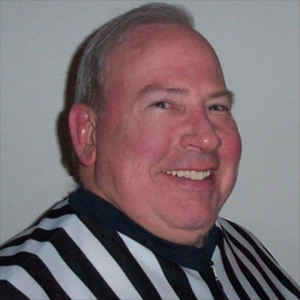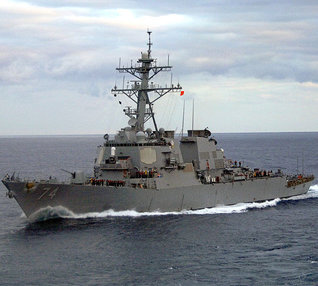
Rndballref
20 Years Experience
Chicago, IL
Male, 60
For twenty years I officiated high school, AAU and park district basketball games, retiring recently. For a few officiating is the focus of their occupation, while for most working as an umpire or basketball referee is an avocation. I started ref'ing to earn beer money during college, but it became a great way to stay connected to the best sports game in the universe. As a spinoff, I wrote a sports-thriller novel loosely based on my referee experiences titled, Advantage Disadvantage
The buzzer does not make the ball dead. Players should play on until they hear a whistle. Once possession has been established or the basket made the refs should blow the whistle, stop play and check with the timer to find out why the horn sounded.
Not sure what situation you are asking about. If this does not answer your question please rephrase it. So, if the free throw shooter has the ball and the defense commits a violation in a one-and-one, the referee should hold one arm parrallel to the floor to indicate a delayed call. If the free throw goes in then the violation is ignored. If the free throw is missed, then the one-and-one is restarted from the beginning. If the ball was not at the disposal of the free throw shooter and a violation occurs, it should be ignored and the process reset.
Yes you can in NFHS rules as long as the shot was a legitimate try. If the referee deemed it not to be a legitimate shot it should be called traveling.
No, the points should not be cancelled because the free throw ended "when it is certain the try was unsuccessful". The points were scored after the free throw ended, but before the error was recognized. When you are able to correct an error, "points scored, consumed time and additional activity, which shall occur prior to the recognition of an error shall not be nullified.
Call Center Employee (Retail)
 I've heard that a lot of startups are hiring really well-educated college grads and paying them a lot, reasoning that customer service is often a client's most lasting impression of a brand. What do you think, and is it something you see spreading?
I've heard that a lot of startups are hiring really well-educated college grads and paying them a lot, reasoning that customer service is often a client's most lasting impression of a brand. What do you think, and is it something you see spreading?
Navy Officer (Former)
 Do you think there's a chance the US reinstates the draft?
Do you think there's a chance the US reinstates the draft?
Day Trader
 What can a good day trader earn in a year?
What can a good day trader earn in a year?
After a made basket, or after a timeout after a made basket the team with the ball can pass it from one out of bounds player to another, and then throw it in bounds (along the endline only). Here's the play:
Team B is pressing with no defender on the out of bounds thrower in player A1. A2 is on the other side of the paint but he is guarded by B1. A1 has the ball out of bounds. A2 steps out of bounds leaving the defender B1 no one to guard. A1 passes the ball to A2 who is out of bounds. A1 steps in bounds and receives the pass from A2.
Yes, it is a direct technical foul. It is dangerous and unsportsman-like.
No. The correct protocol when a player fouls out is this: the scorer normally informs the ref that the player assessed with the last foul has fouled out. The ref lets the coach know that the player has fouled out and he has 30 seconds to send in a substitute. Once the fouled out player leaves the court and the substitute is beckoned in, then the free throws can start. By the way, if there are other subs at the time the player is being replaced, then all of them should be beckoned in. Normally you would wait until there is only one free throw left (or a one and one) before sending subs in.
-OR-
 Login with Facebook
Login with Facebook (max 20 characters - letters, numbers, and underscores only. Note that your username is private, and you have the option to choose an alias when asking questions or hosting a Q&A.)
(A valid e-mail address is required. Your e-mail will not be shared with anyone.)
(min 5 characters)
By checking this box, you acknowledge that you have read and agree to Jobstr.com’s Terms and Privacy Policy.
-OR-
 Register with Facebook
Register with Facebook(Don't worry: you'll be able to choose an alias when asking questions or hosting a Q&A.)